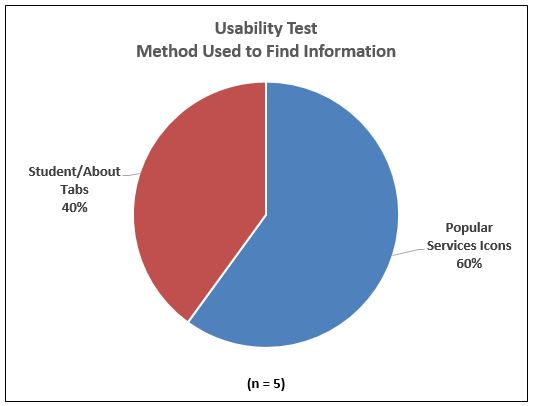Usability Test of Buswell Memorial Library's Website
The focus of my usability test was on the navigability of the Wheaton College Buswell Memorial Library’s website. Specifically, I wanted to know if the current layout facilitated the search for information. Initially, I thought of asking test participants to find the library’s page starting from Wheaton’s homepage. I decided against this because to do so requires several clicks and I wanted to stay focused on the usability of the library’s site. I also thought about asking participants to search for a certain book or find how to chat with a librarian. I decided not to include these either because both the search box and chat box are easily visible on the top half of the page. I wanted to think of questions where the user would need to scroll down the page or open other pages to find an answer. The final questions used for this study are as follows:
- What are the hours for the Manuscript Reading Room on Wednesday, September 25th?
- Who is the Subject Librarian for Intercultural Studies?
- How long is the loan period for a student who borrows a book from another library?
- What are some of the research databases related to geology?
In addition to the usability test, a brief exit interview was conducted with each participant. They were asked for their overall impression of the site and the level of ease when navigating it. A convenience sample was used to find five participants - two were family members and three were co-workers. All participants have a high computer literacy level. The successful completion of each question was determined by whether a correct answer was provided. I also noted the method participants used to find the answer.
Although not all participants navigated the page in the same way (see chart below), all answered each of the four questions correctly. To find the hours of the Manuscript Reading Room, three participants found the answer by scrolling down the page and finding the weekly listing. The other two clicked on either the “Students” or “About” tabs located at the top of the page. From there, they found a link for “Hours”, which required another click to open. The three participants who scrolled down to find the hours also found the icons for popular services, which includes “Find Your Subject Librarian”, “Borrow from Other Libraries”, and “Research Databases”. All three clicked on these icons to answer the next three questions. The other two participants continued to use the “Students” or “About” tabs. This method took longer to find the answers because they had to skim through a list of topics and subtopics and then make multiple clicks. Regardless of method used to answer the test questions, all of the participants provided favorable reviews of the site. While a few made suggestions to improve the site, e.g., adding a general search box and making the popular services more prominent, none of the participants thought it was very difficult to find information. The table below provides detailed responses to the exit interview.

| Participant | Comments |
|---|---|
| 1 | “This was easy. I used the icons to find the answers.” |
| 2 | “Site has potential to be information dense but it was easy to use and not overwhelming.” |
| 3 | “Site is pretty well organized. It took a few minutes but I was able to find what I needed even though I wasn’t familiar with it.” |
| 4 | “It doesn’t have a general search box and you can’t rely on people scrolling down the page. I’d give the site a B+.” |
| 5 | “Site is pretty straightforward and very clean looking. I think the area for popular services should be moved to the top of the page because it’s important and you don’t see it right away.” |
The small sample size is a limitation of this usability test. However, all participants answered each questions correctly, indicating that Buswell Library’s website is not difficult to navigate and find information. Further evidence to support this finding is the fact that in the exit interview, none of the participants reported having any problems finding the answers to the test questions. In a future study, it would be interesting to test whether a different set of questions would yield the same favorable results.
In Lab 3, I learned the steps necessary to conduct a usability test – from thinking of test questions, to administering the test, to analyzing the results. Although my test collected data from only five participants, I can see that even a small sample can provide helpful feedback on how users actually use a website. I also learned how to format my webpage using internal CSS. I think this will make the process of creating multiple web pages in the future easier (and reduce errors) because I only have to code the styles once.